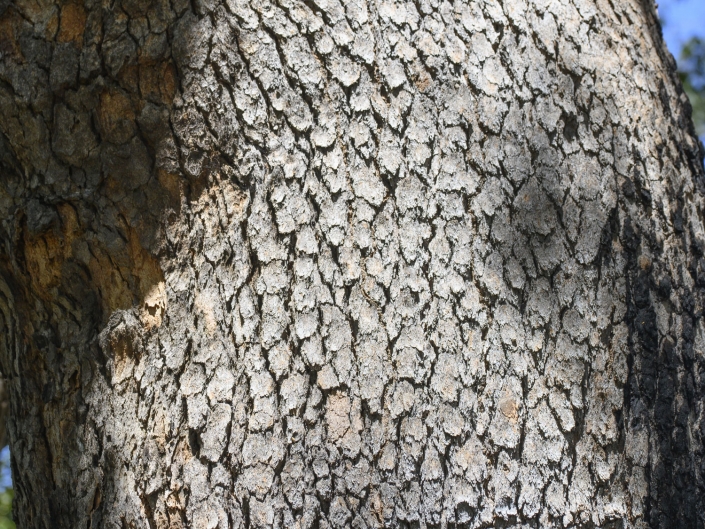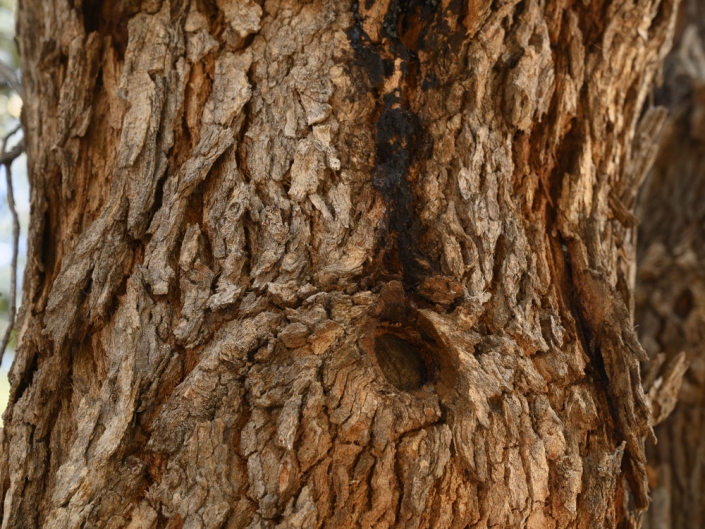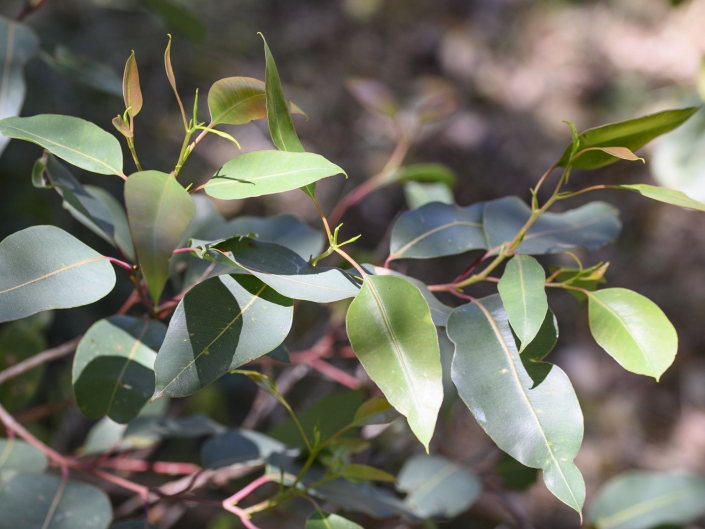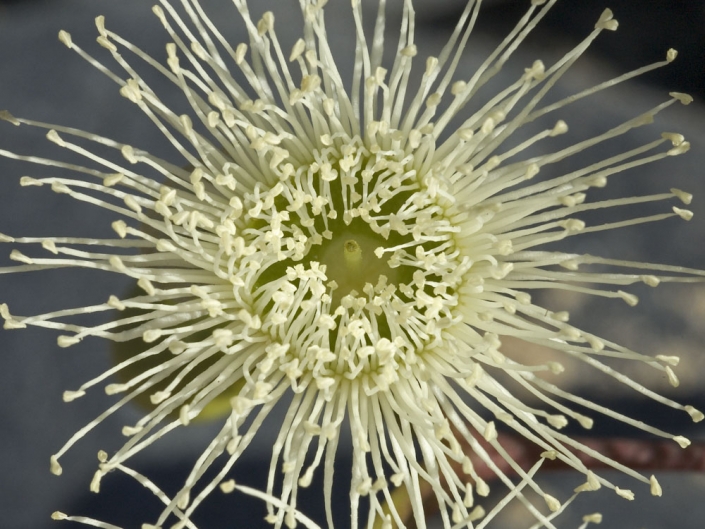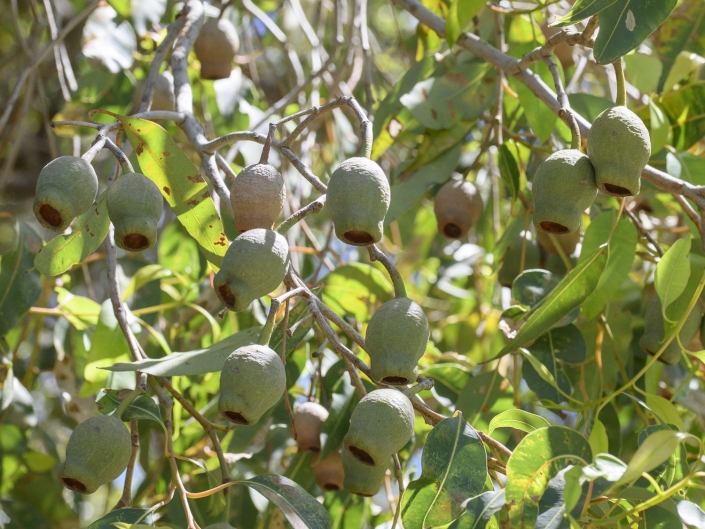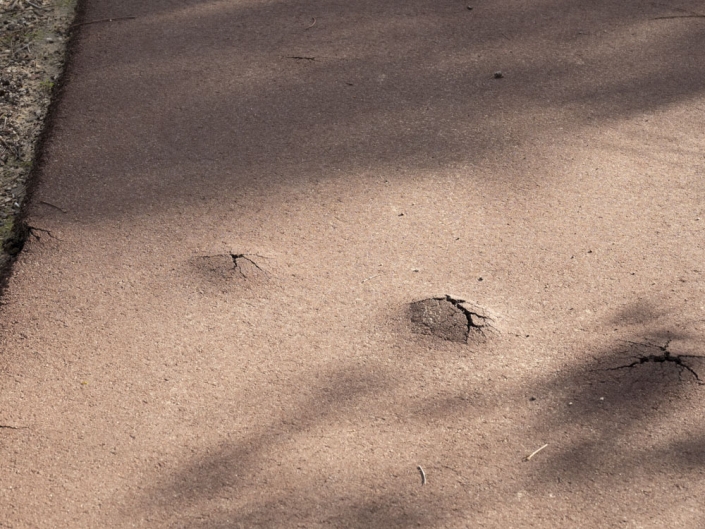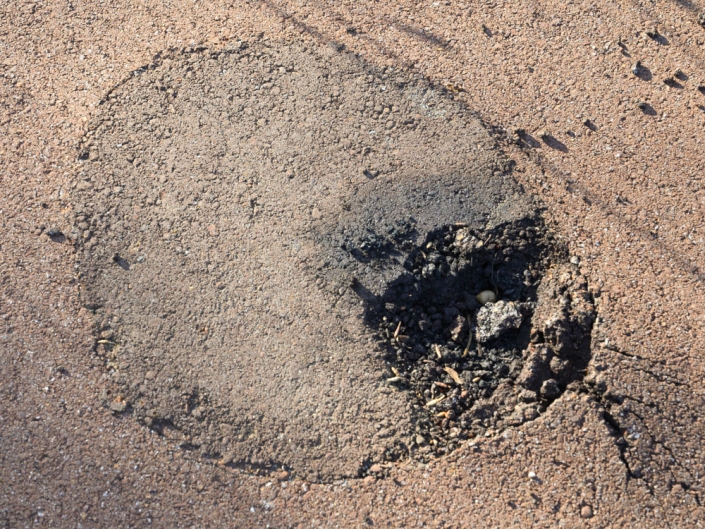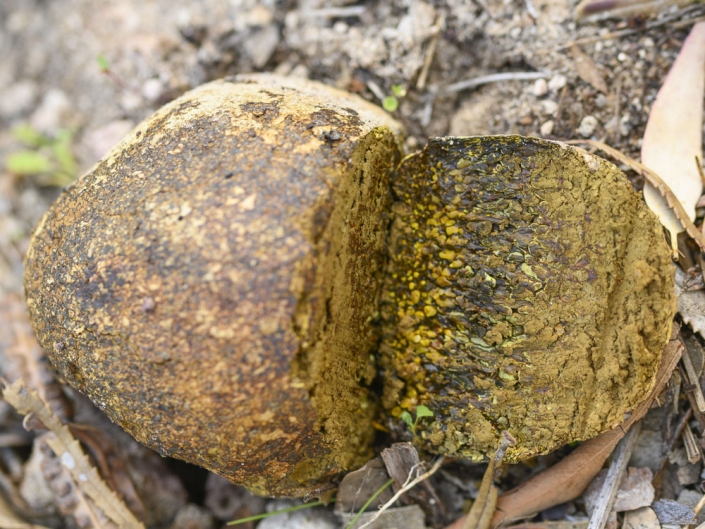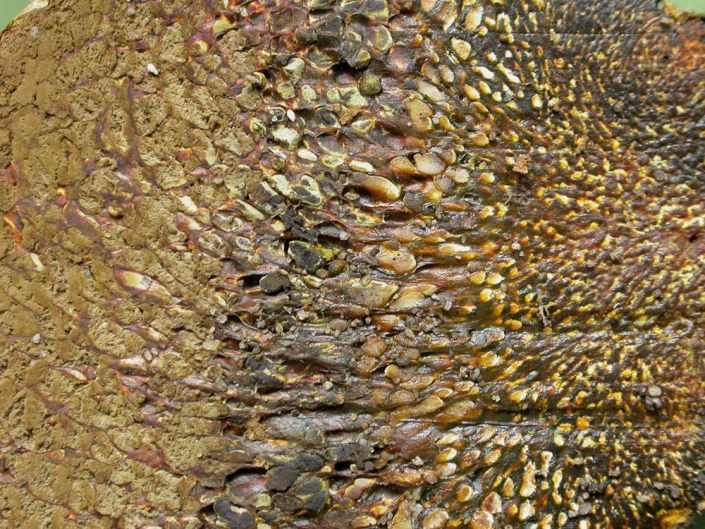Point of Interest 8: Marri Tree
A lone marri tree grows on the side of the track in banksia jarrah woodland with a dead jarrah tree behind the marker. Look out for Dwarf Wedding Bush, a shrub with masses of white flowers in early spring.
Common Wildflowers
Winter – Menzies Banksia, Running Postman
Spring – Dwarf Wedding Bush (Ricinocarpos undulatus), Milkmaids
Late Spring & Early Summer – Fragrant Waitzia (Waitzia suaveolens), Autumn Lily (Tricoryne elatior), Waldjumi (Jacksonia sericea), Native Flax, Candle Banksia, Jarrah, Marri, Fringe Lily (Thysanotus arenarius)
Focus Topic 17. Marri Trees
Marri trees Corymbia calophylla) are only found in a few small stands in Warwick Bushland. This species prefers wetter, more fertile soils than Jarrah. Some marri trees have been planted elsewhere in the Jarrah-Banksia woodland.
Marri belongs to the genus Corymbia, which differs from gum trees in the genus Eucalyptus due to flower arrangement in large clusters called corymbs and leaves that are borne in pairs and are relatively stiff. In contrast Eucalyptus leaves grow alternately along stems and typically hang down. Marri trees also have characteristic scaly bark which contrasts with the stringy bark of jarrah and smoother scaly bark of tuart. They also have red gum exuding from damaged trunks and very large woody fruit and seed relative to most other gum trees.
These large seeds of Marri trees are a very important food for parrots such as ringnecks and red-tailed black cockatoos. The latter leave characteristic damage to gumnuts and heavily prune trees where they are feeding (Focus Topic 10).









